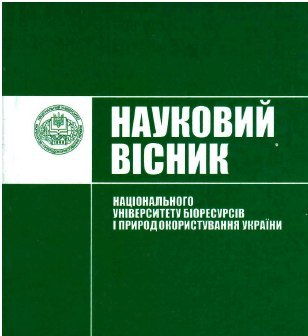Smart technologies in the foreign language For specific purposes teaching
DOI:
https://doi.org/10.31548/philolog0(263).2017.0186%20-%20194Abstract
The article deals with the issues of students’ autonomous learning of the foreign language with the use of Smart technologies. Methodological approaches to the implementation of Smart technologies in foreign language teaching in higher education for the integration of professional and communicative competences have been proposed.
The development of high-level intellectual and practical skills in students requires a constructive approach to learning that cannot be appropriately automated as it depends on high quality interaction between knowledge experts and learners. Interaction is viewed as a key factor to increase motivation, efficiency of teaching process and improvement of students’ independent learning outcomes. One of the ways to boost such activity is to apply Cloud-based technologies.
As an example of Cloud-based instruction, the authors offer a strategy of solving professional problems aimed at developing skills in information searching and processing. During search activity and group discussion of the problem students independently review, clarify and deepen the comprehension of the information. For this purpose, students receive a set of tasks aimed at developing the listening, writing and speaking skills using professionally oriented lectures on TED. The absence of detailed instructions gives students the possibilities to deliver the creative approach and successfully perform the task. To acquire a new vocabulary, students should compile a collective glossary of the new words, terms, phrasal verbs, and idioms. Using the additional relevant sources students have to write an essay reflecting their comprehension of the issues presented in the lecture summary placed for the general consideration on the Google Drive. At this stage, the teacher initiates peer discussions and comments as all students share a common subject and common objective. In order to get the insight into the issues in the TED lecture students are set the task to search for relevant information on the Internet supplying their summaries with the links to the sources found.Since these tasks are carried out in English, the teacher gives students the detailed instructions on how to draft a summary, conduct a discussion, make comments. The teacher also introduces vocabulary, introductory phrases, clichés, cross-cultural insights necessary for mastering not only the language but also communication strategies. As a result, students make their video presentations, open to co-viewing, and share their impressions and comments.
In the article the authors give analysis and provide recommendations on the results of the experiment aimed at assessing the advantages and disadvantages of Smart technologies implementation in students’ independent learning for developing both communicative and professional competences. Teachers should be able to adapt the curriculum to use Smart technology as an effective teaching tool. Considering the rapid pace of innovation in Cloud-based development, the authors emphasize the importance of long-term studies to understand more about the role and impact of Smart technologies in the foreign language for specific purposes teaching.
References
Smart technologii v vysshem obrazovanii. [Smart technologies in higher education]. Available at: http://www.library.fa.ru/exhib.asp?id=199.
Bates, T. (2016). Thirty Years Later: Reflection on Computer Assisted Learning or Communications for Instructional Technology in Distance Education. Ryerson University, Toronto, Canada, 32(2),186–188.
Watters A. (2014). Top ed-tech trends of 2014. Available at: http://2014trends.hackeducation.com/
Ellis, R. (2008). Principles of instructed second language acquisition. Washington, DC: Center for Applied Linguistics. Available at: http://www.cal.org/resources/digest/digest_pdfs/Instructed2ndLangFinalWeb. pdf.
Gerasimenko, T.L., Zhidkova, O.N., Romanova, S.A., Grubin, I.V., Gulaya, T.M. (2013). Razvitiye yazykovoj kompetentsii u studentov neyazykovogo vuza s pomoschyu smart technologij [Smart technologies (wiki and podcasts) in foreign language teaching]. Statistics and economics, 1, 3-6.
Gulaya, T.M., Gerasimenko T.L. (2014). Opyt ispol’zovaniya technologii ?razvitiye kriticheskogo myshleniya’v protsesse obucheniya professionalno-oriyentirovannomu delovomu anglijskomu yazyku [Practice of using “critical thinking” technology in teaching English for specific purposes]. Pedagogy and psychology in education, 1, 54-62.
Sergeyenkova, Yu. (2014). Ispol’zovaniye technologii web.2.0 v obuchenii anglijskomu yazyku. [Practice of using technology Web. 2.0 in teaching English]. Available at:
http://iyazyki.prosv.ru/2014/05/technologyweb-studyenglish/
Mischuk, E. (2014). “Klassnyi” sinergeticheskij effect ili chemu uchat reklamschikov v Yuzhnom Taivane? [Synergetic effect in the classroom or what advertisers learn in South Taiwan]. Available at: https://lingvister.ru/blog/klassnyi-sinergeticheskiy-effekt-ili-chemu-uchat-reklamshchikov-v-yuzhnom-tayvane
Belovodskaya, A.A. (2015). Obucheniye v sotrudnichestve v kontekste Web-oriyentirovannoj modeli obrazovaniya: opyt organizatsii kursa “Russkij yazyk delovogo obscheniya” [Collaborative learning into the web-oriented education: practice of organization of the course “Russian for specific purposes”]. Pedagogy and psychology in education, 13, 432-343.
Zelikovska, O.О., Stepanenko O.I. (2016). Razvitiye mezhkul’turnoj kommunikatsii, ispol’zovaniye oblachnyh tehnologij kak komponenty metodiki prepodavaniya inostrannyh yazykov [The development of intercultural communication and cloud technology application as the innovative components in foreign language teaching]. Cooperation of innovative technologies in teaching the Ukrainian and foreign languages as a way of ensuring the knowledge effectiveness: III Ukrainian Scientific Conference, Kharkiv: RVV KhTEI KNTEU, 181-184.
Downloads
Published
Issue
Section
License
Relationship between right holders and users shall be governed by the terms of the license Creative Commons Attribution – non-commercial – Distribution On Same Conditions 4.0 international (CC BY-NC-SA 4.0):https://creativecommons.org/licenses/by-nc-sa/4.0/deed.uk
Authors who publish with this journal agree to the following terms:
- Authors retain copyright and grant the journal right of first publication with the work simultaneously licensed under a Creative Commons Attribution License that allows others to share the work with an acknowledgement of the work's authorship and initial publication in this journal.
- Authors are able to enter into separate, additional contractual arrangements for the non-exclusive distribution of the journal's published version of the work (e.g., post it to an institutional repository or publish it in a book), with an acknowledgement of its initial publication in this journal.
- Authors are permitted and encouraged to post their work online (e.g., in institutional repositories or on their website) prior to and during the submission process, as it can lead to productive exchanges, as well as earlier and greater citation of published work (See The Effect of Open Access).

